DIY painting of plates is a work that is available for both experienced and novice decorators. After all, the technique is very easy to learn, does not require the purchase of expensive materials, waste of time and effort, so you can not be afraid of losing interest in the process. And hand painting on glass and ceramics can become your permanent hobby, a method of relaxation, or even a hand-made business on Internet sites like the Masters Fair or Etsy.
In this material we will consider the following methods and techniques of painting the plates with their own hands, which are suitable for beginners:
- Dot painting of plates;
- Painting by stencils and templates;
- Artistic hand painted plates;
- Stained glass painting on glass.
Master class number 1: turned plates painted

Dot painting of plates (peak or point to point) is a technique of drawing and creating contours with points, thanks to which you can achieve the effect of chasing, inlaying with stones, colored rhinestones or beadwork. In the photo below you can note the successful combinations of colors and patterns (scroll the photo to the right).

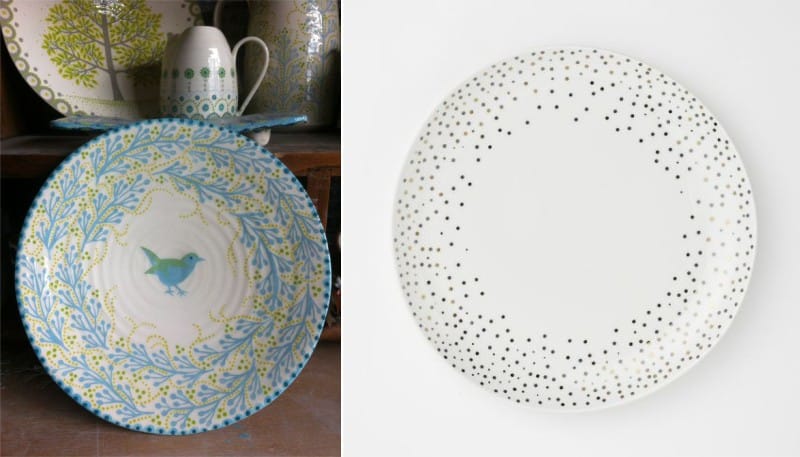
But the ideas of decor drinking in technique of pique.
To work you will need:
- Cotton pads for degreasing and cotton swabs to correct an unsuccessful pattern;
- Ethyl alcohol, nail polish remover or special degreaser;
- Contour acrylic paints of desired colors;
- Aerosol lacquer to secure and protect the image;
- Needle and paper for cleaning tubes.
Tips:
- If you want to use plates for their intended purpose, then choose a baked acrylic paint with the signature dishwasher ability or dishwasher resistant. Durable outline paints can be found in the brands Hobby Line Kreul, Decola, Marabu and Pebeo Vitrail.
- Paints should not be too thick or too liquid. You can check it in the following way: click on the tube - if the paint comes out easily, but in a puddle, the consistency is too thin, if it is difficult to squeeze out, then it is too thick. Before starting work, it is necessary to test each tube, since different colors of paint of the same type can be of different consistency.
- You can draw dots with a small thin brush, needle or toothpick, using acrylic ceramics in ordinary jars, if drawing from tubes seems difficult to you.
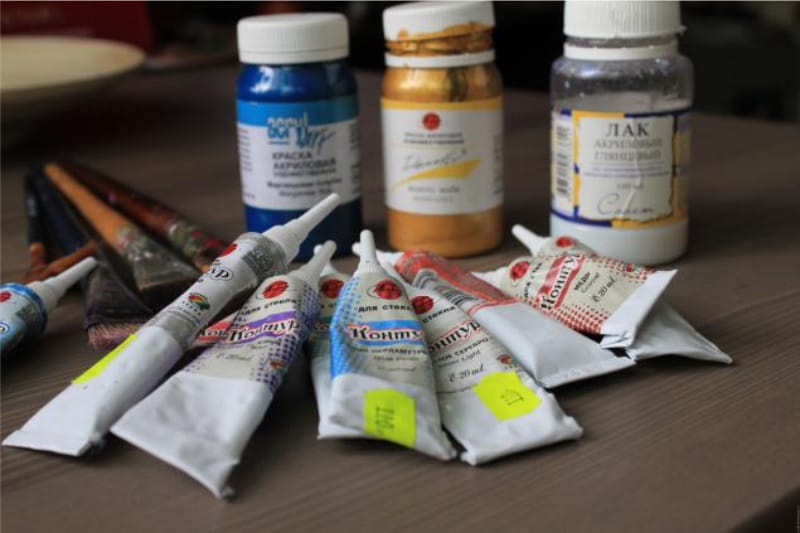
Drawing technique
The first thing you need to well degrease the surface with alcohol or a degreaser using a cotton pad and only then start to work. Skilled craftsmen can draw directly on the plate, without using any sketches and layouts, coming up with patterns right in the process. You too can confide in free flight of thoughts and improvise.But if you want to realize a certain artistic intention, then it is better to first draw a sketch, template, stencil or markup, having thought out the color scheme and ornaments.
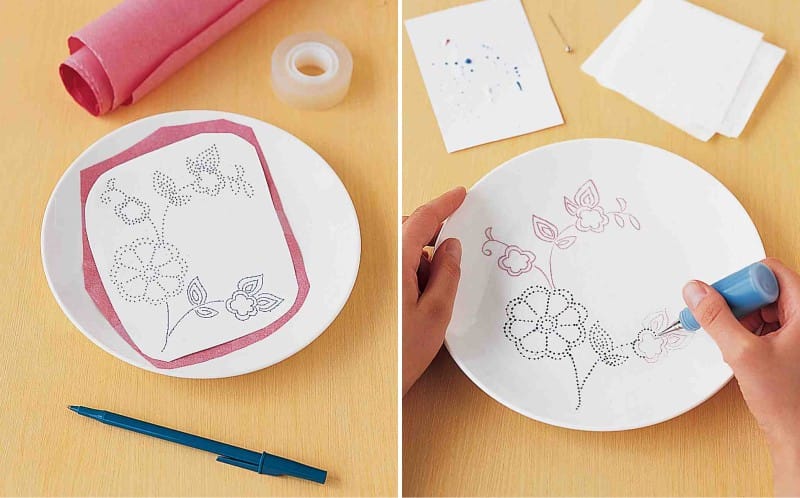
For painting on glass, it is convenient to apply patterns that can be glued to the back of the plate.
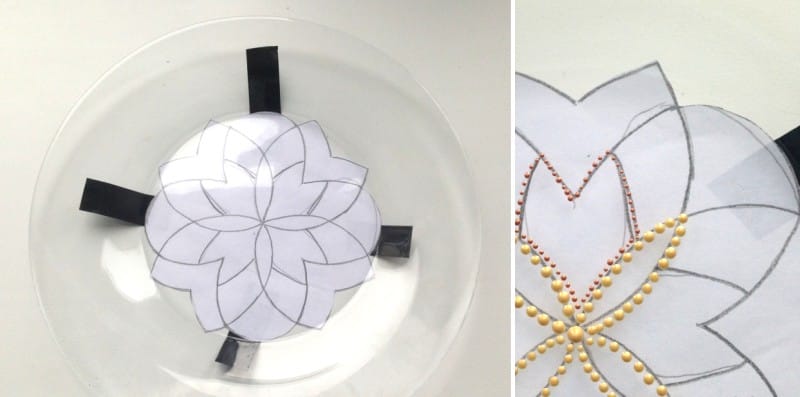
Tip for beginners: before you paint a plate, practice putting small, medium and large dots at equal distances from each other with equal pressure and pressure on the tube.
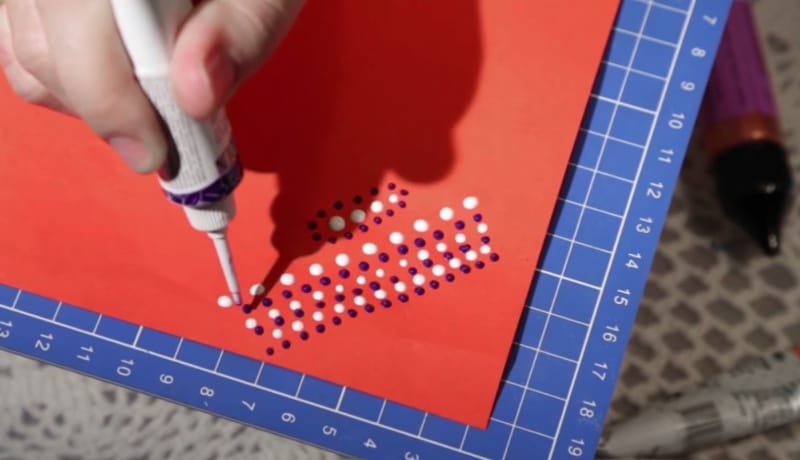
- The main rules are: in one line there must be points of the same size, and the same distance must be maintained between the points, and it is very important that it (the distance) is minimal, that is, so that the points are “read”, but do not merge into a solid outline ;
- Remember that the larger the points, the greater the distance between them can be. Conversely, the smaller the point, the less should be indented from each other;
- It is necessary to draw on the principle of the general to the particular, that is, starting with large contours and ending with the drawing of small parts.
After work the paint should harden. You can dry them in three ways:
- Naturally for 1 day - if you want to use the plate rarely or even use it only as an object of decor.
- Dry with a hairdryer, and then leave for 10-12 hours to harden the paint in a natural way.
- Bake at a temperature of 150-170 degrees for half an hour, and then, without taking out of the oven, let the dishes cool - in case you want to eat from the painted plates. It is advisable not to wash the painted dishes after firing for 20 days - so the paint will last longer.
After the paint on the decorative plate dries, you can fix it with varnish.
Master class number 2: painting plates on stencils and patterns
Another way that anyone can master is painting dishes with stencils and patterns.
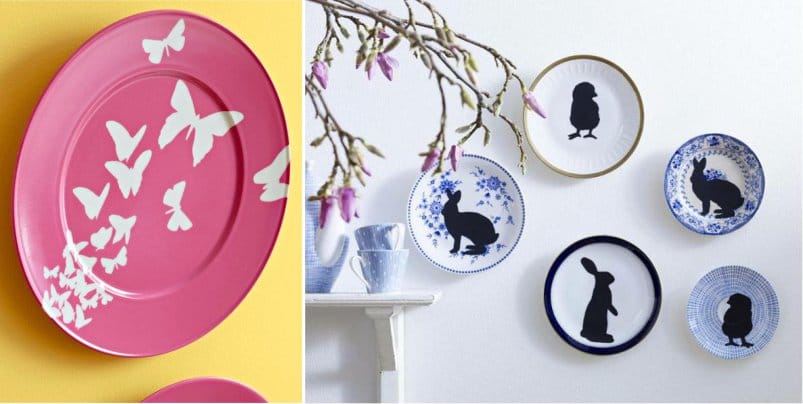
To work you will need:
- Acrylic paints on glass and ceramics or felt-tip pens for painting dishes that come in different colors and thickness of the rod. In Russia, most often you can find markers from Marabu;
- Artistic synthetic brushes of suitable size (if necessary) or a sponge for padding;
- Nail polish remover, alcohol or degreaser and cotton pads for degreasing;
- Everything you need to draw and cut a stencil or template: paper, cutter, pencil.
Drawing technique
First you need to draw yourself or print a ready-made stencil / template, and then cut the necessary holes with a stationery knife. Perhaps, in this technique only this stage can be called laborious. Then everything is much simpler: degrease the surface and glue the template to the bottom with adhesive tape.

Then paint over / tampu pattern on the stencil. Then on your picture you can add accents, draw details or outlines.
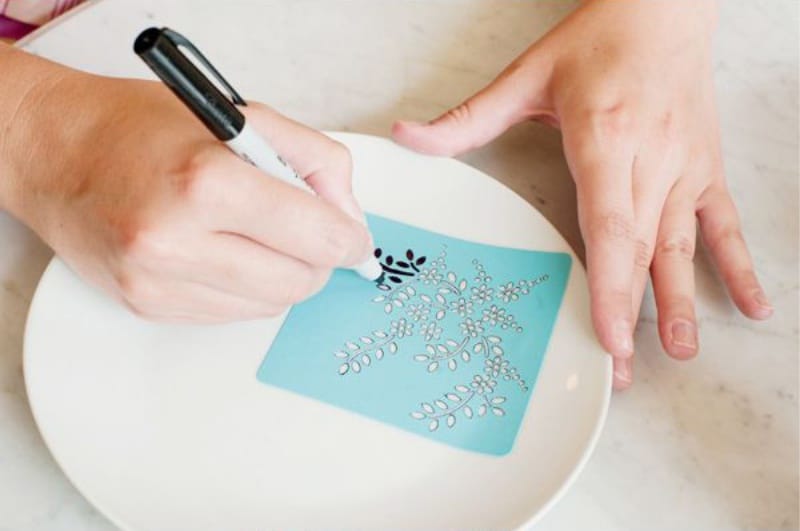
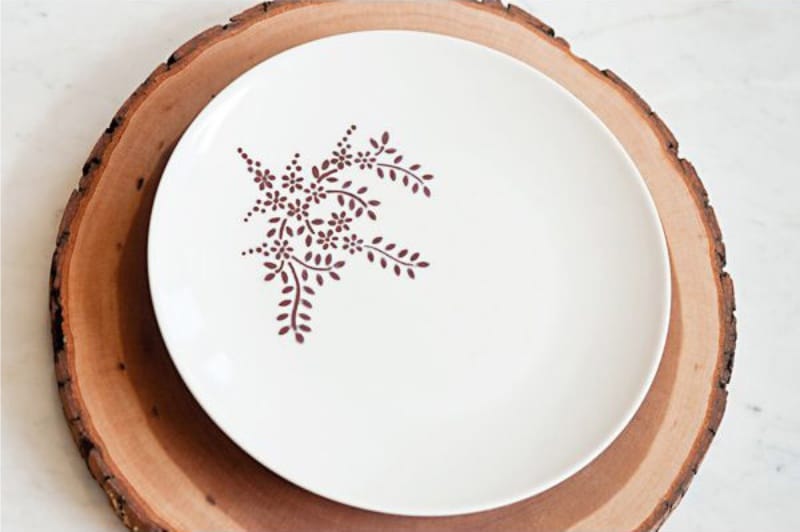
If you painted with acrylic paints, then you can dry them naturally, with a hair dryer or in the oven according to the recommendations of the first master-class on dot painting of plates.
Master class number 3: Art painting by hand with brushes
Painting the plates in the traditional way, that is, with brushes and paints, is the best way to write a real masterpiece.
To work you will need:
- Artistic synthetic brushes of different shapes and sizes;
- Acrylic paints for glass and ceramics or baked water-based stained glass paints;
- Tip: stained paints are more transparent and, at the same time, bright, but with them a little more difficult to work because of the liquid consistency and the ability to spread over the surface, so they are often used in combination with contouring colors restraining them. In addition, keep in mind that solvent-based stained paints are not suitable for painting plates that will be used for their intended purpose.
- Any degreaser.
Drawing technique
First you need to write underpainting, that is, to draw large parts of the composition, which will be its basis. Next, add the volume and depth of the picture, using dark and light colors.And then engage in drawing details. At the end of the work, use the recommendations for fixing paint from the first master class.
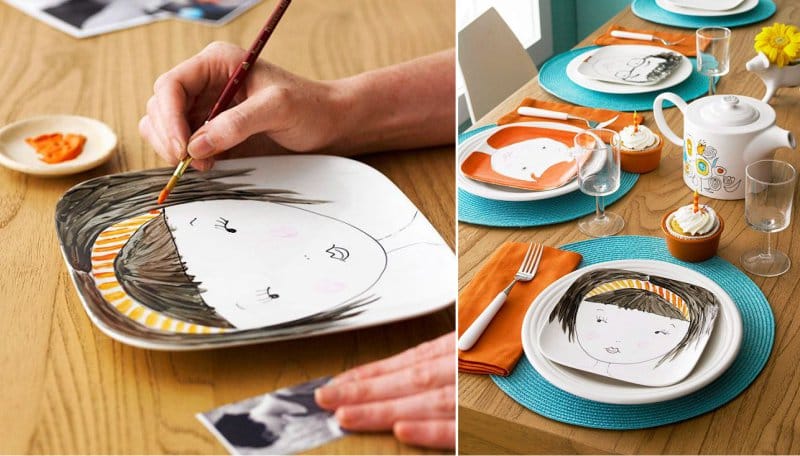
Tips:
- Mix colors and play with semitones to get unusual colors and effects.
- Painted ceramic plates with frosted glaze will be easier than painting on glossy ceramics or glass, as the paint will go denser and smoother.
Here are simple, but interesting ideas for painting your plates with brushes and acrylic paints with your own hands for beginning artists (scroll the photo to the right).
We suggest that those who have the skill and experience of drawing be inspired by the next selection of photos of painted plates.

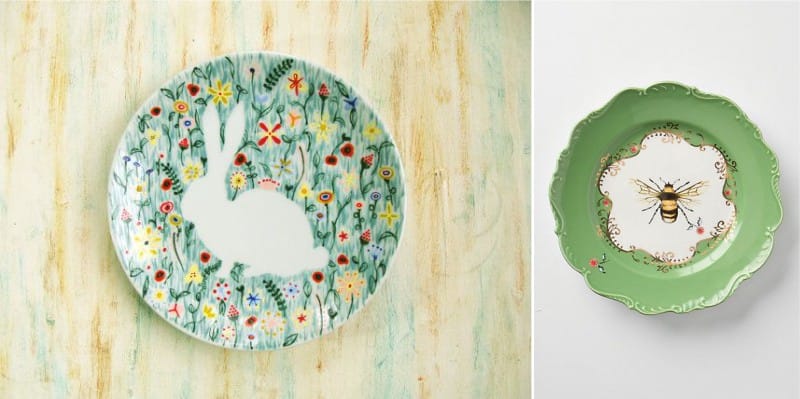
But a great idea for painting saucers and plates from old tea sets.
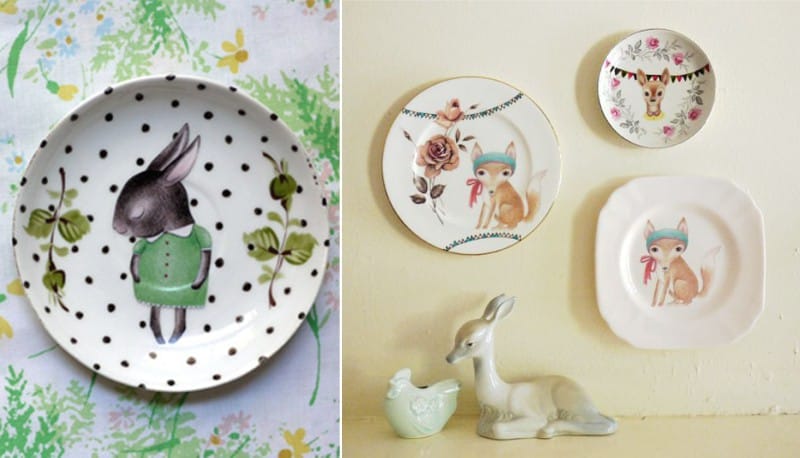
Master class number 4: painted with markers on ceramics and glass
Drawing with markers and markers is familiar to all of us from childhood. With the help of special markers for painting dishes with your own hands, you can quickly and simply decorate a ceramic plate with inscriptions, as well as draw a graphic and very detailed picture. Examples of such decor look in the following selection of photos.
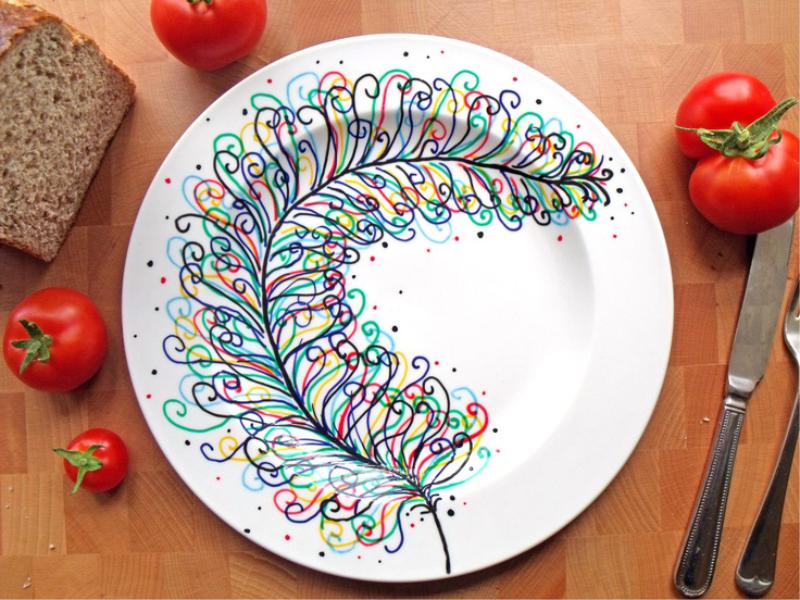
To work you will need:
- Any degreaser and cotton pads;
- Markers of different colors and thickness of the rod.
Technique painting
- Before you start painting on dishes, do not forget to degrease the surface.
- The main rule - try to draw lines and outlines of the picture with small, frequent strokes - this is how you are less likely to make a mistake.
- Also try to keep drawing from the general to the particular.
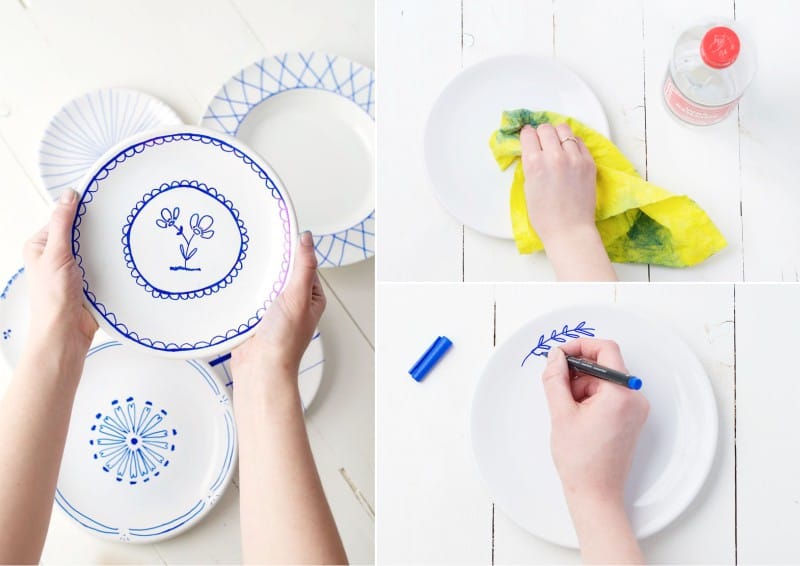
- Pre-outline the contours of the picture, if necessary, use a template or stencil.
- Most markers dry out in 24 hours, do not require firing and are not washed from the dishwasher.
Video lesson: stained glass painting on glass
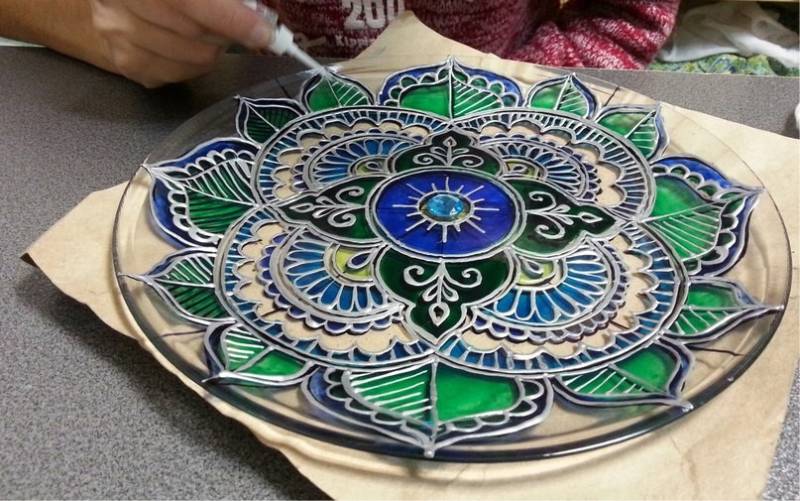
Finally, it was the turn of the stained glass painting plates. This is a slightly more complicated painting technique on dishes because of the paint itself - as already noted, stained glass paints are liquid, and therefore they often fill in contours. And they are more transparent, glossy and less resistant than acrylic. If you want to use "stained glass" plates, then choose only water-based paints, and at the end of the work, bake the dishes in an oven at 170 degrees. If you want to hang a painted dish on the wall, then you can choose paints not baked on the basis of the solvent and, in this case, do not forget to get a varnish to fix the picture.
Pay attention also to our site guide in the section. Kitchen decoration and decor - site guide.
For more information about the stained glass technique of painting glass plates with their hands, see the following video:
- Do-it-yourself glass painting for beginners and experienced decorators
- We decorate the walls with plates - a master class and 100 photos for inspiration
- Painting glasses and ceramic mugs - 3 master classes and ideas for inspiration
- Hand painted vases: 3 workshops and 45 ideas of decor
- 12 super ideas for home and kitchen


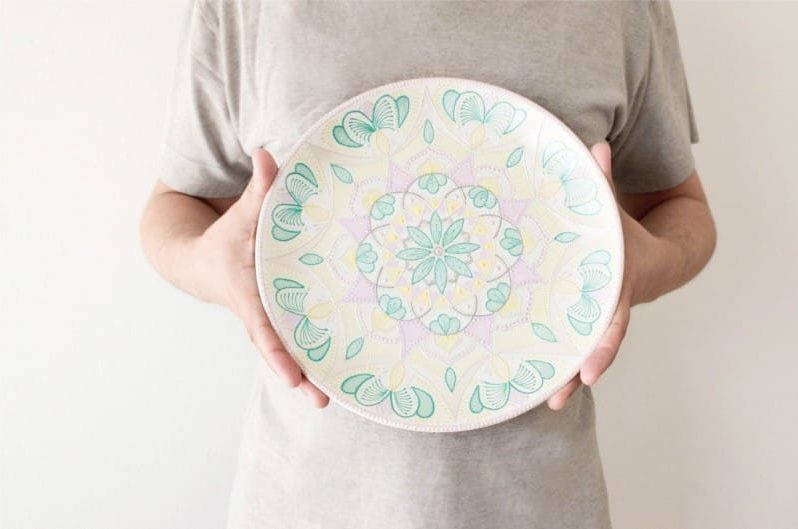
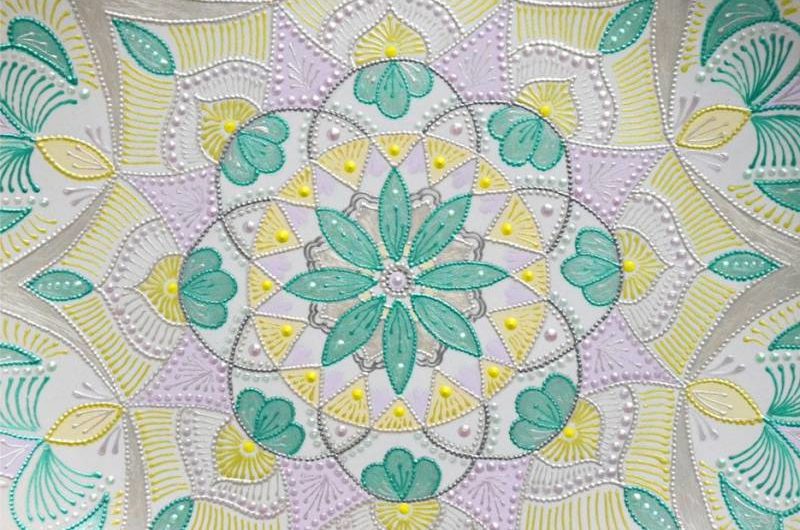
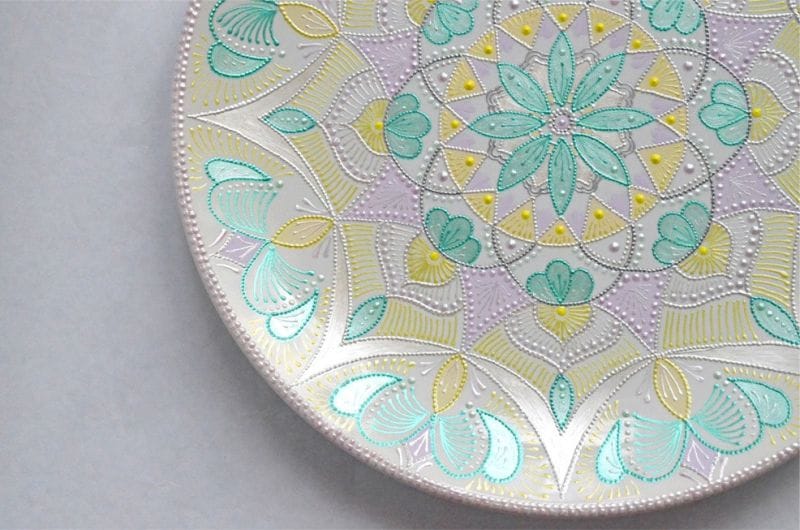
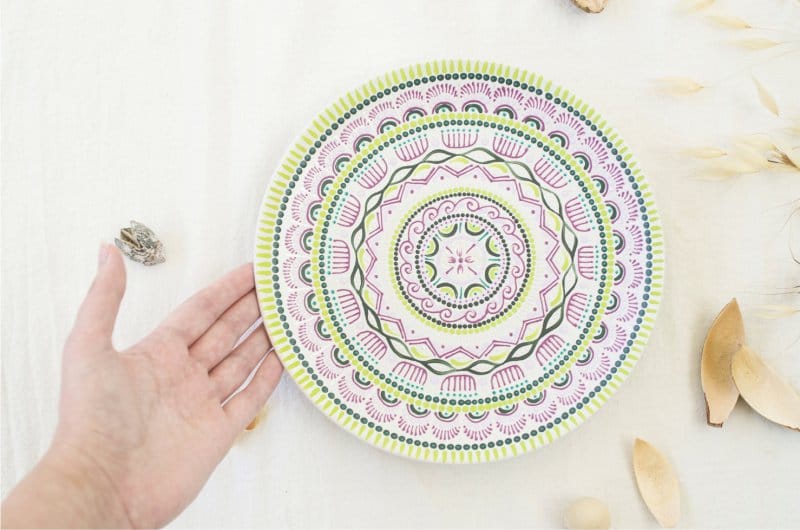
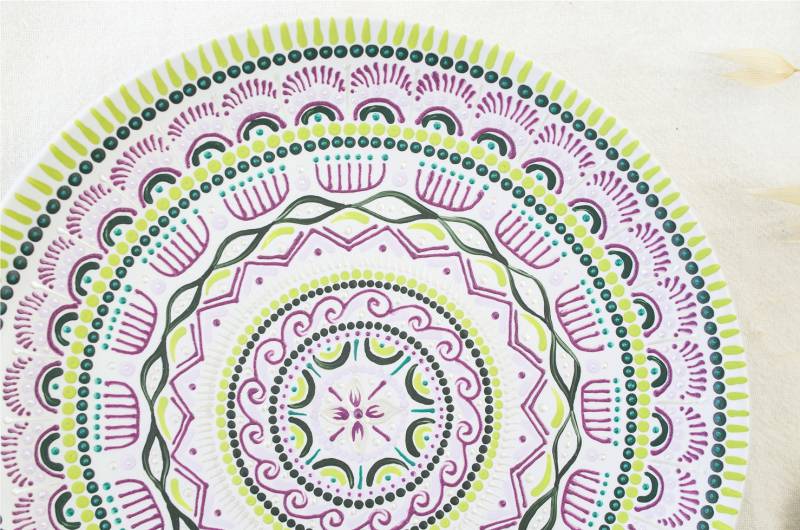
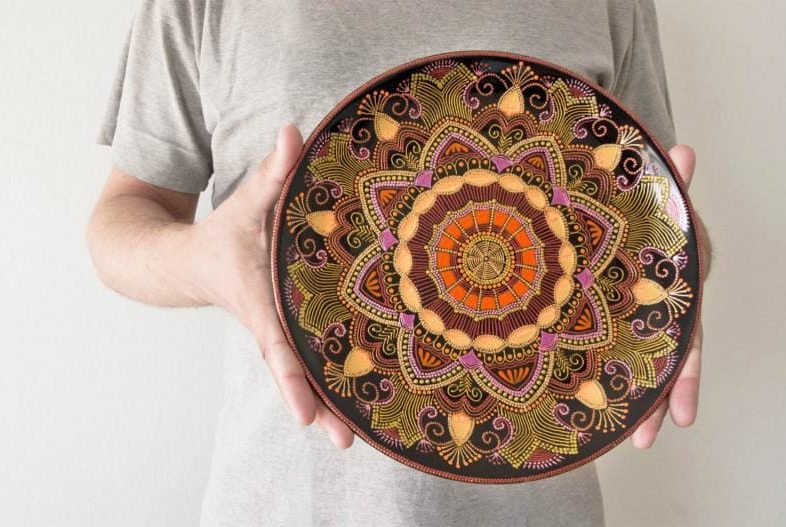

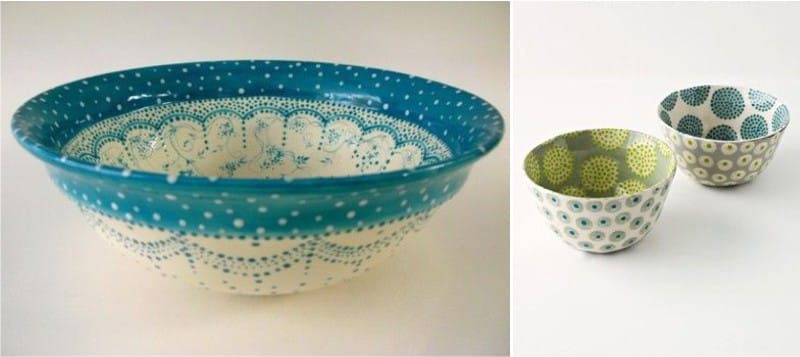
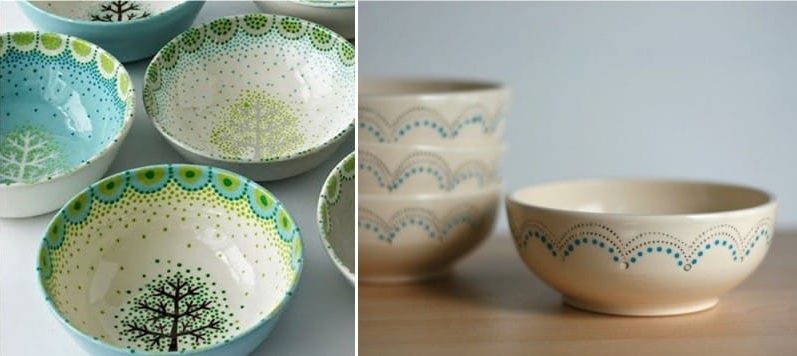
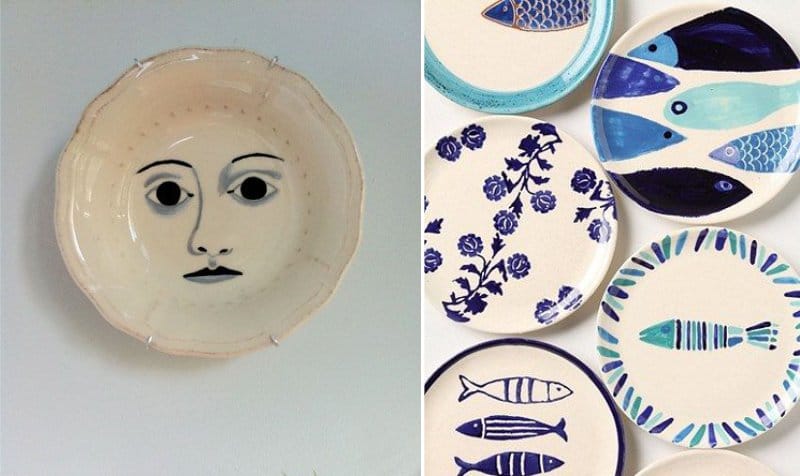
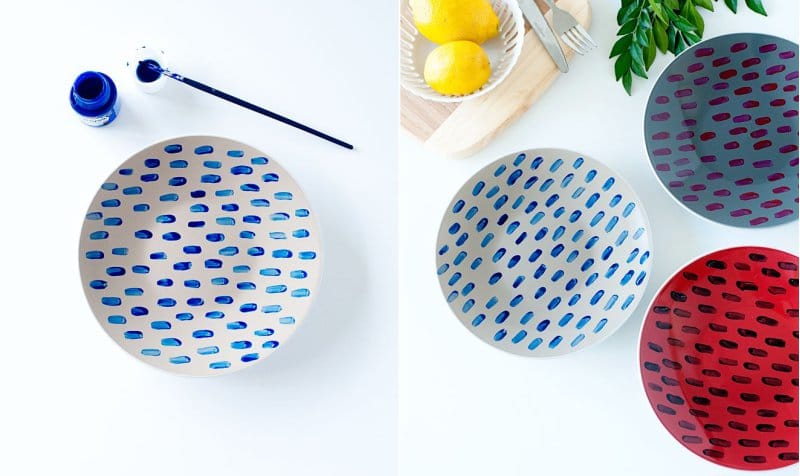
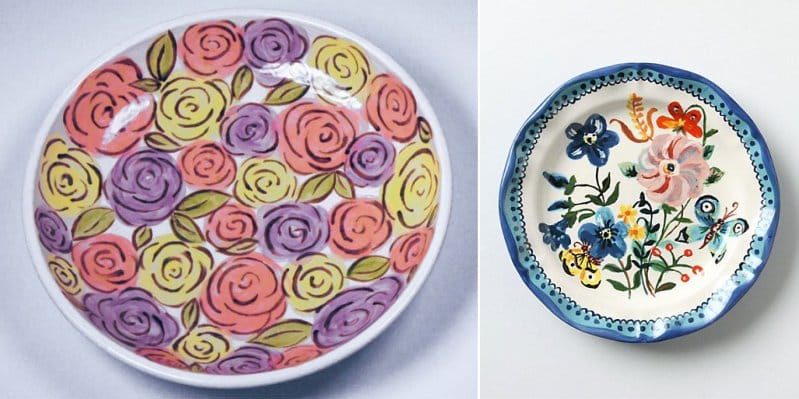
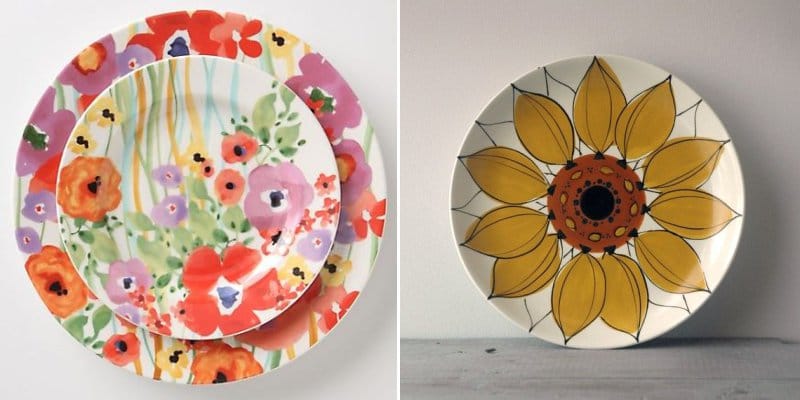
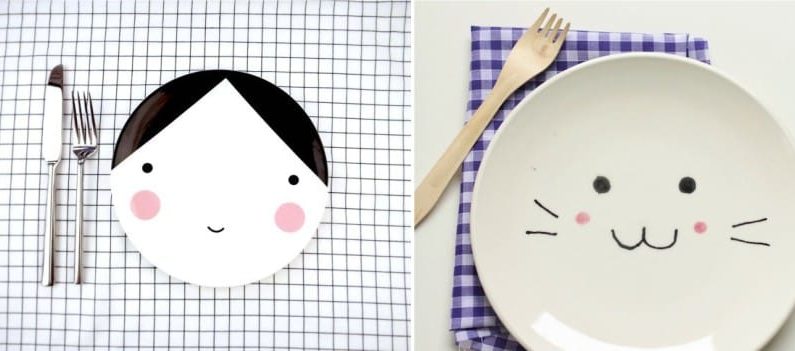
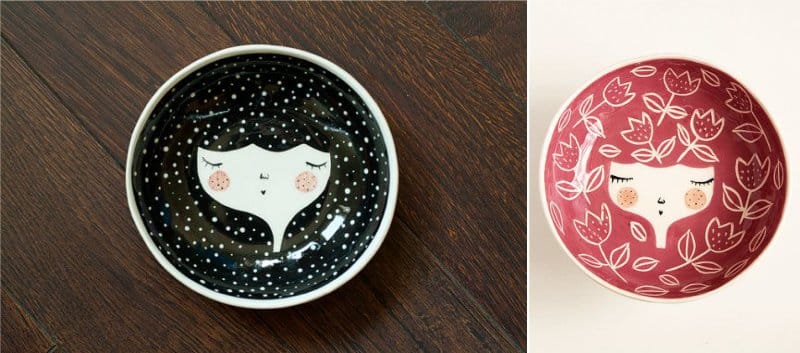
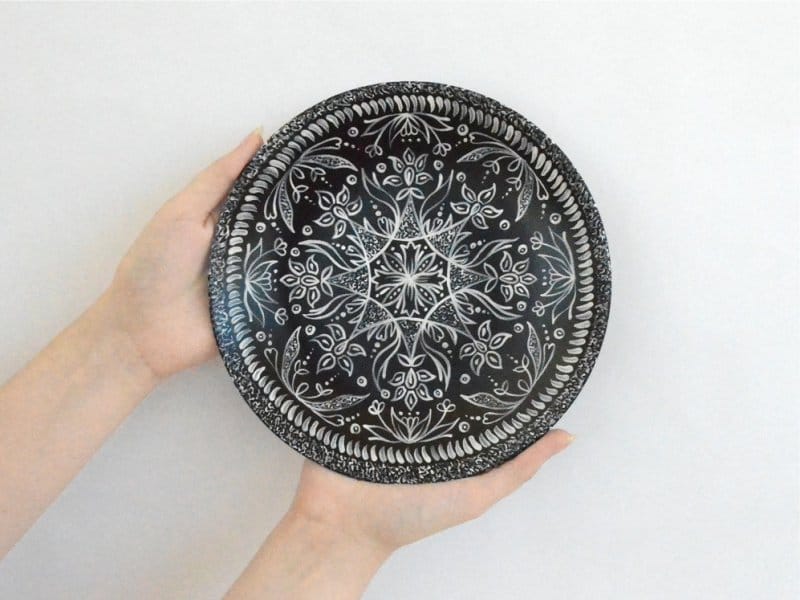
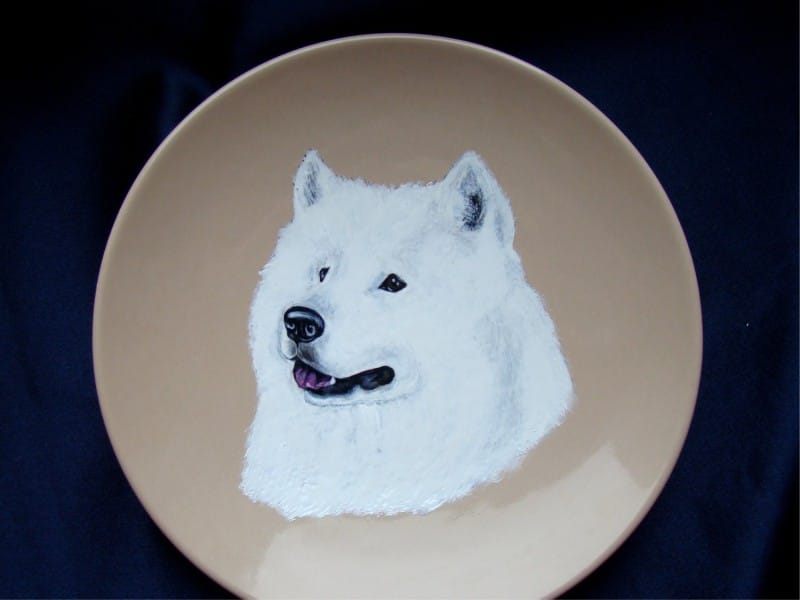
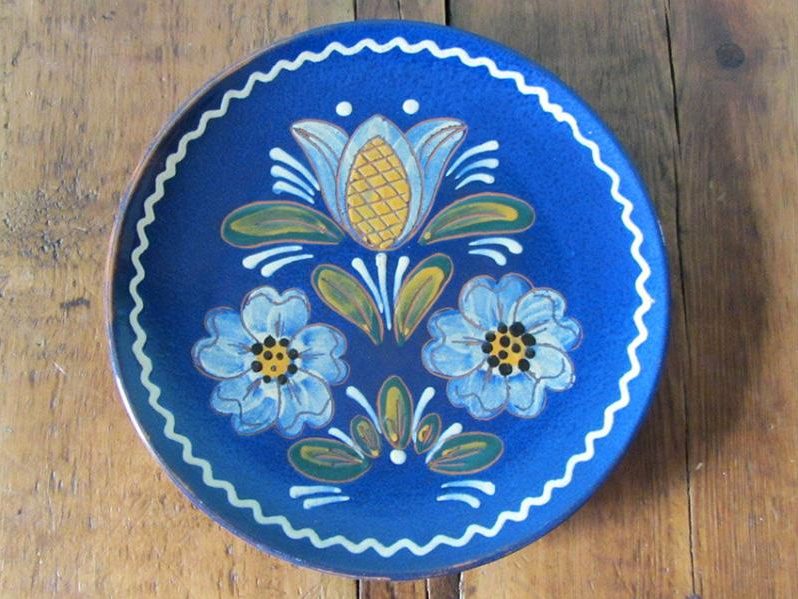
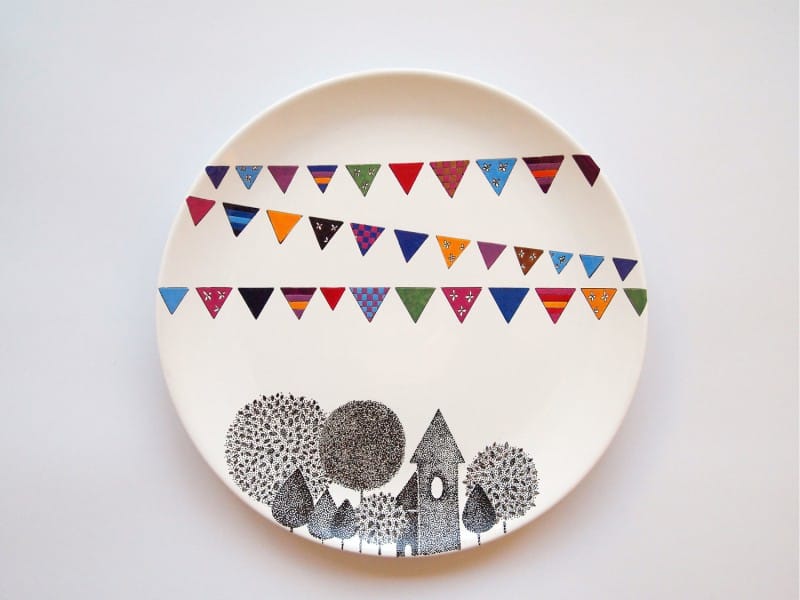
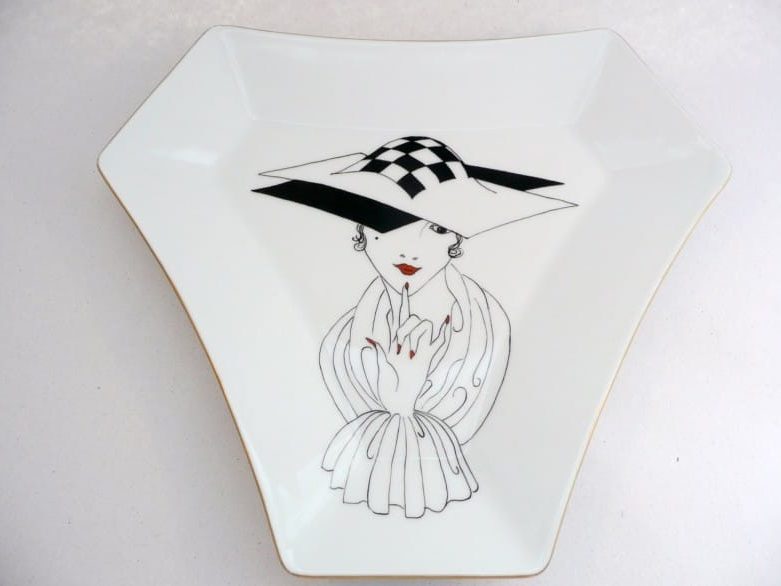
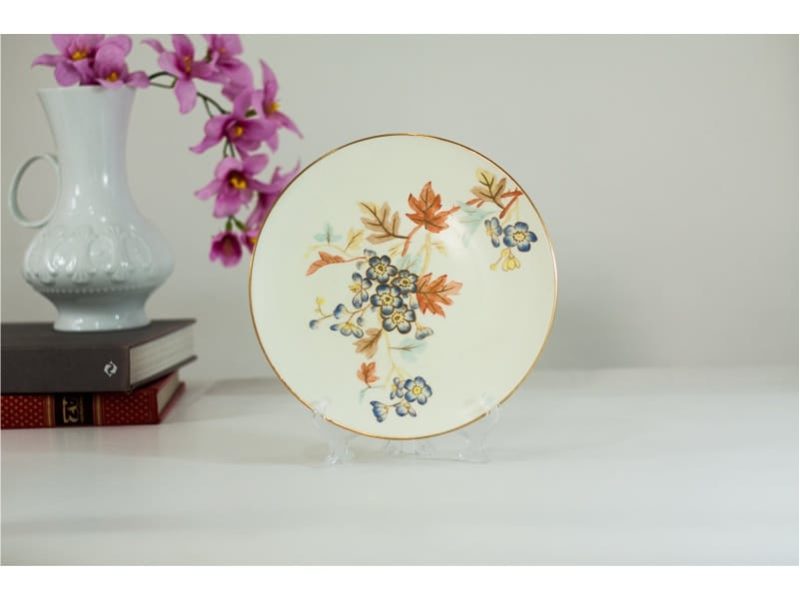
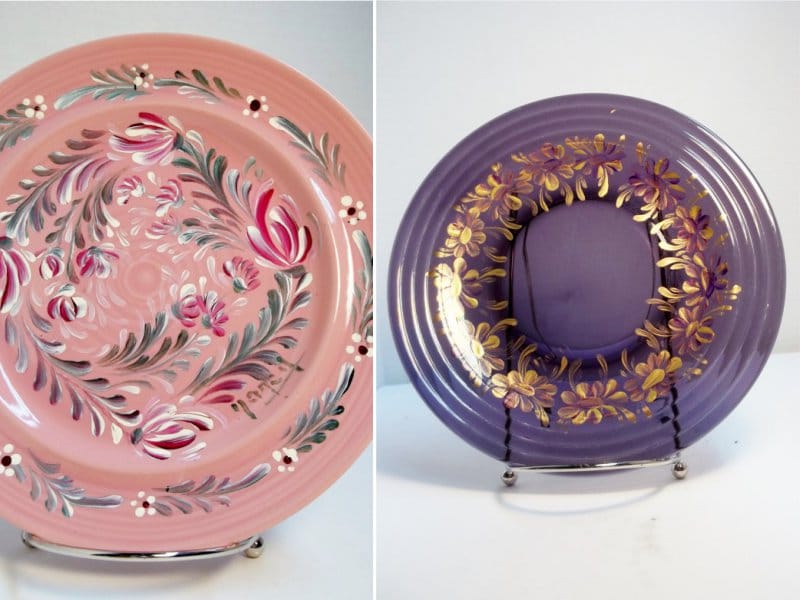
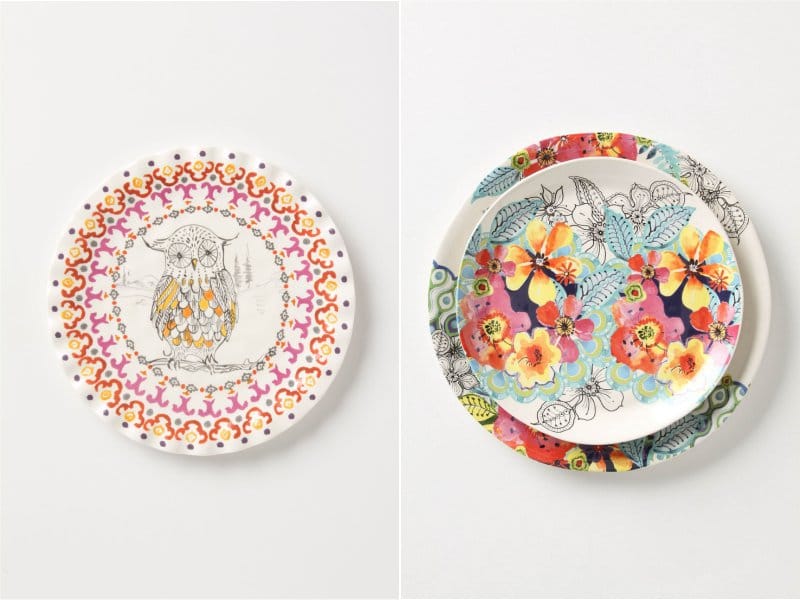
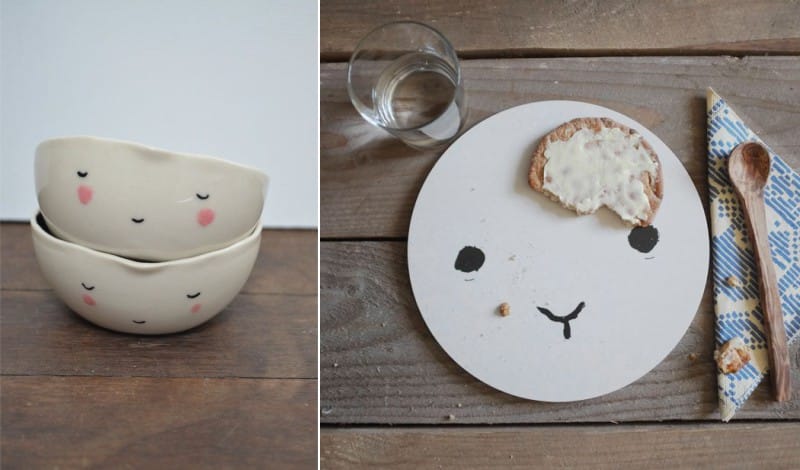
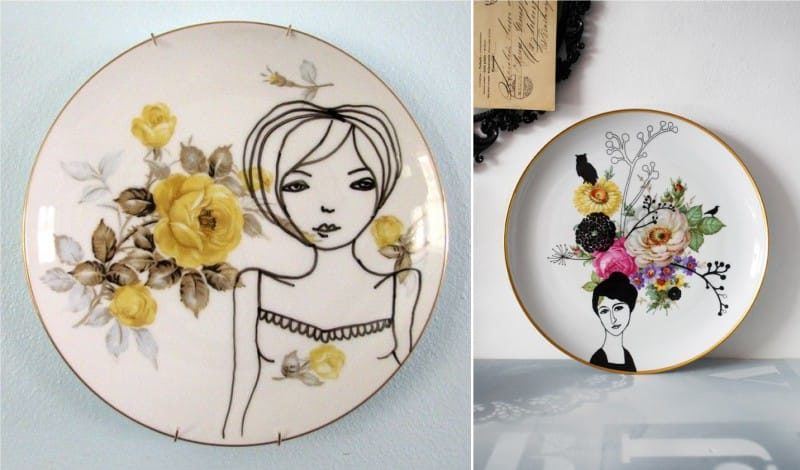
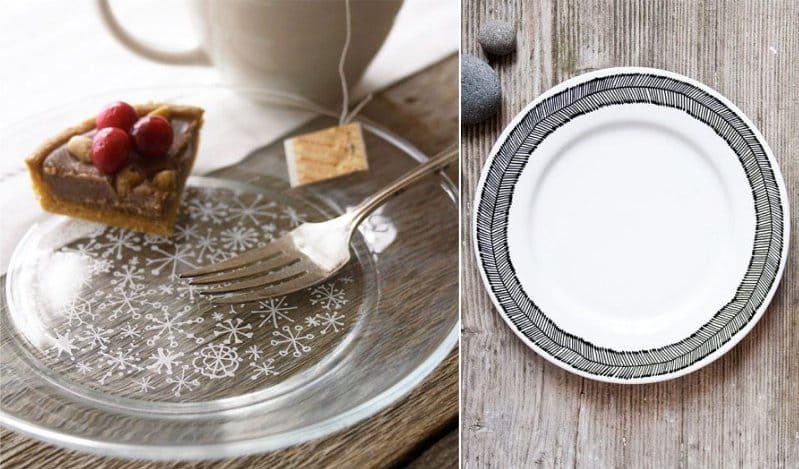
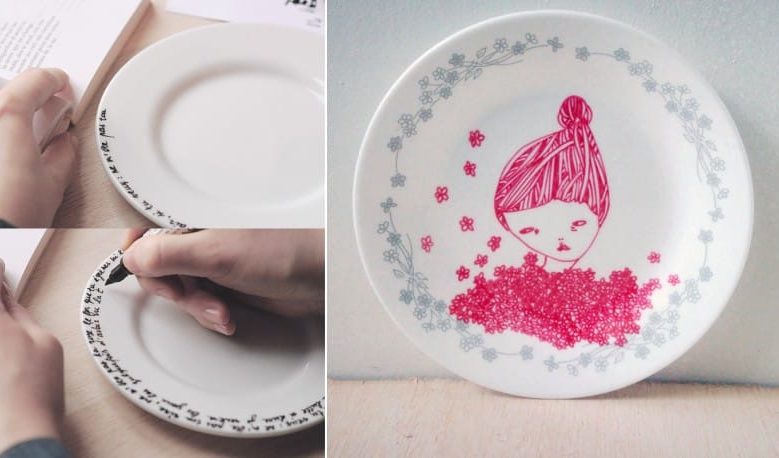
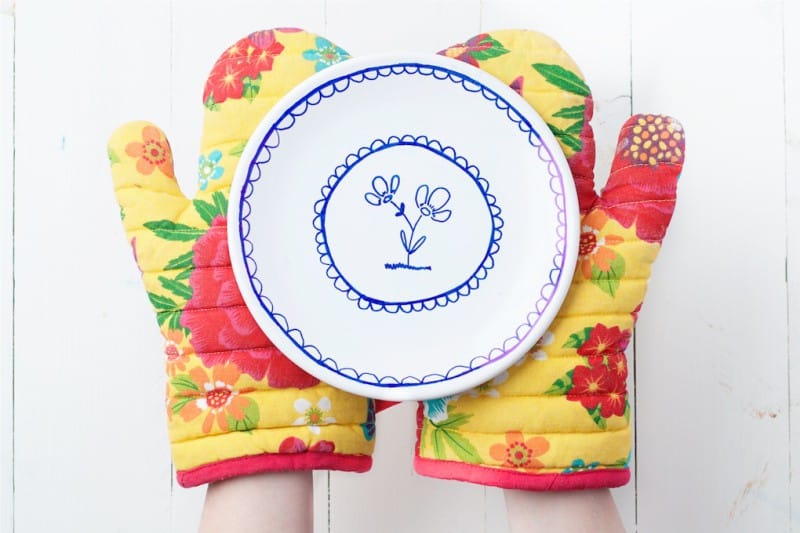
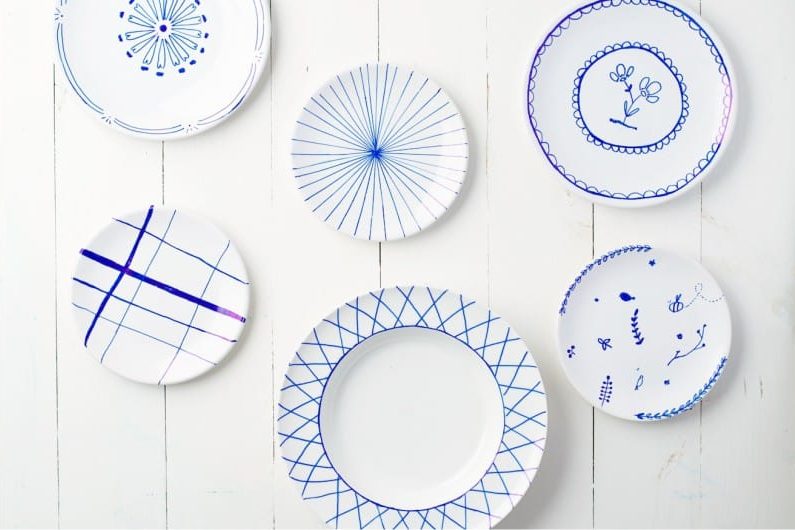

 (Rate the material! Already voted:45 average rating: 4,56 from 5)
(Rate the material! Already voted:45 average rating: 4,56 from 5)
mk is good, but you have never mentioned that such dishes can only be used for decorative purposes, in no case for food (((((
In the beginning, it is said that such dishes can be used for food, but for this you need to choose special paints for firing!)